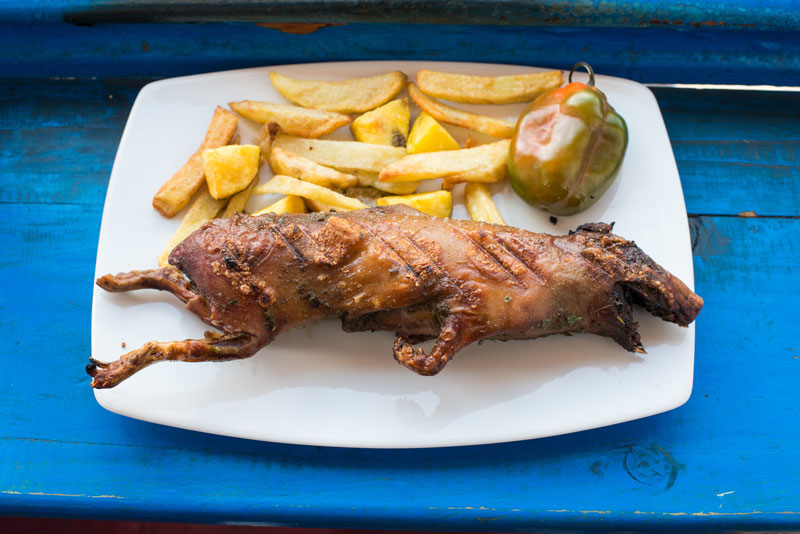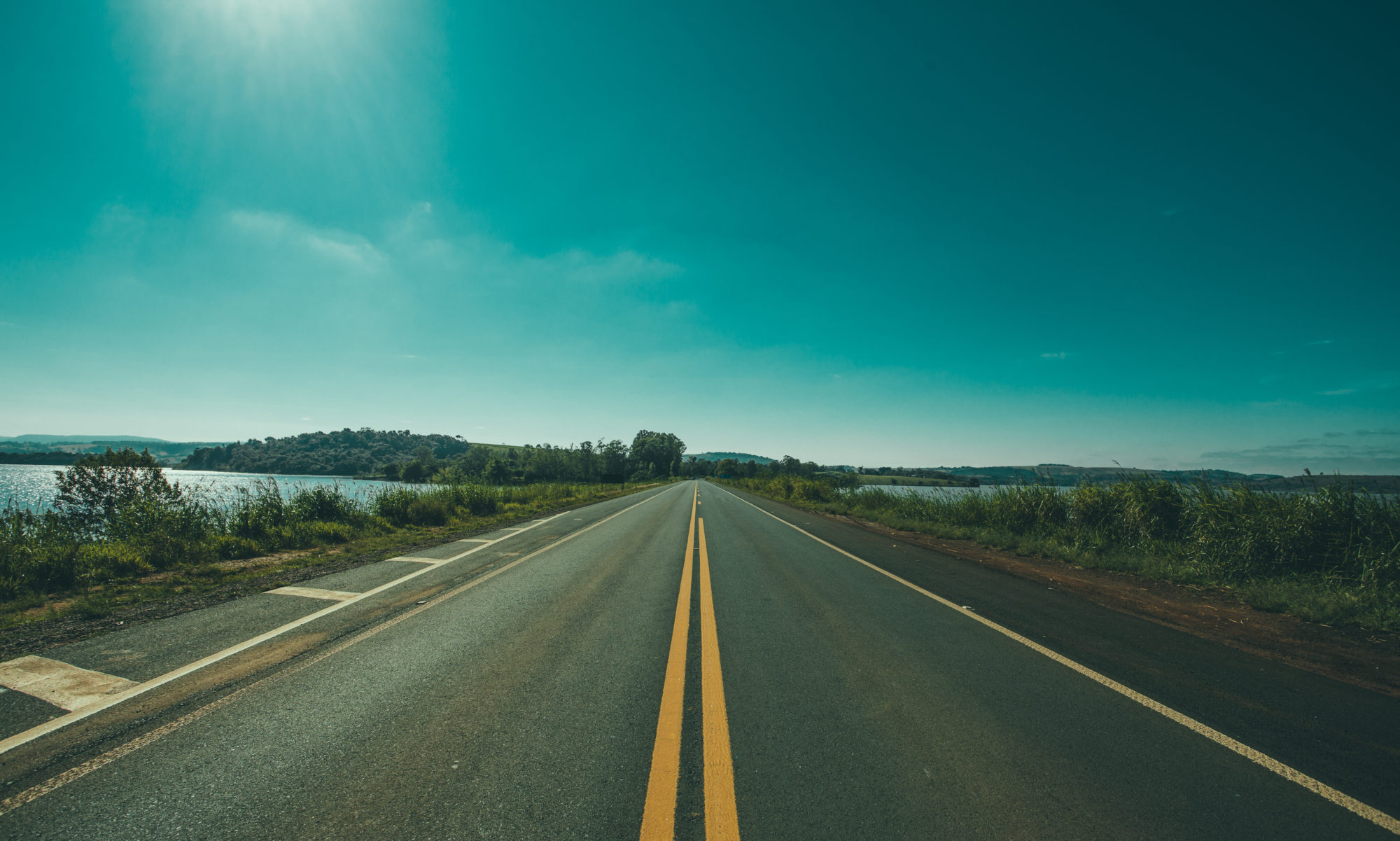The Cusco area is home to one of the great wonders of the world: the fabled citadel of Machu Picchu.
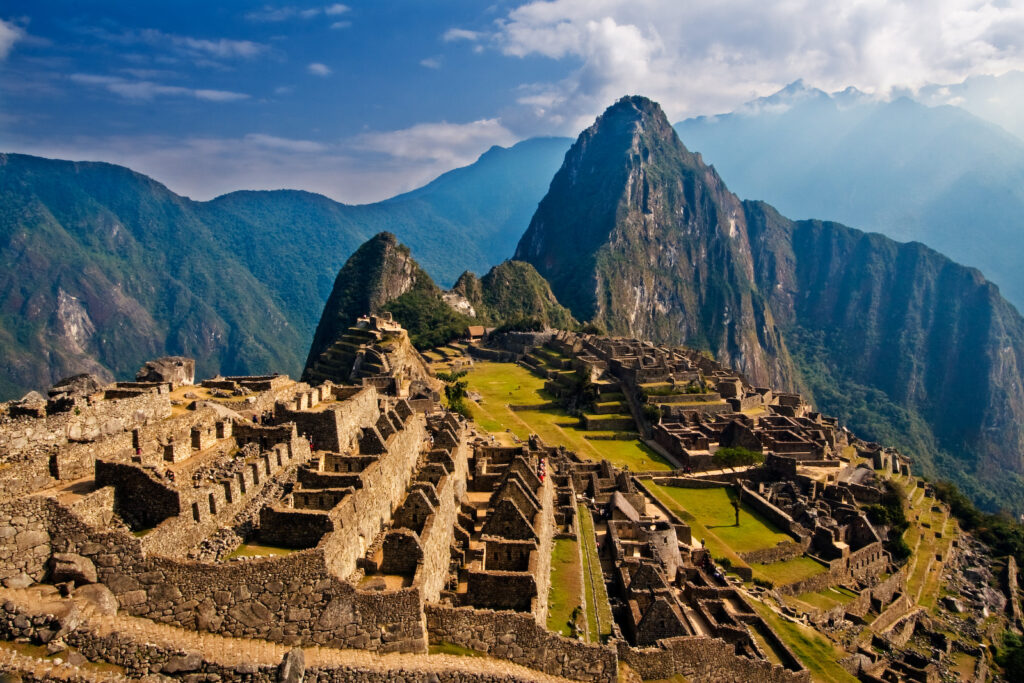
Yeah, no – we didn’t go there.
In this day and age, you have to plan your visit to Machu Picchu weeks – if not months – in advance, such is its popularity. The only way to make an impromptu visit (we are told) is to wake up in the middle of the night, take a bus to a train to a bus and try to finely coordinate this with a pre-purchased visit timeslot. We don’t make plans that far in advance because our rambles are – Ta-dah! – random rambles.
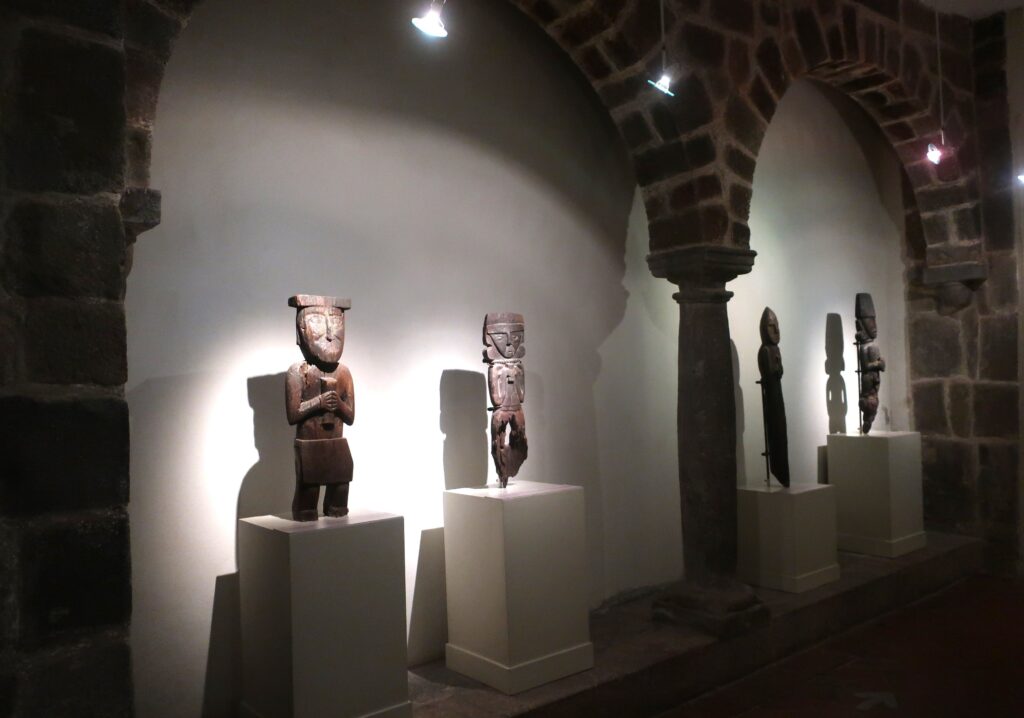
Anyway, it doesn’t matter much for a couple of reasons. There is now a Machu Picchu Museum in Cusco itself. When Hiram Bingham first brought the world’s attention to Machu Picchu in 1911, he hauled a lot of artifacts back to Yale University. A century later, they have been returned to Peru.
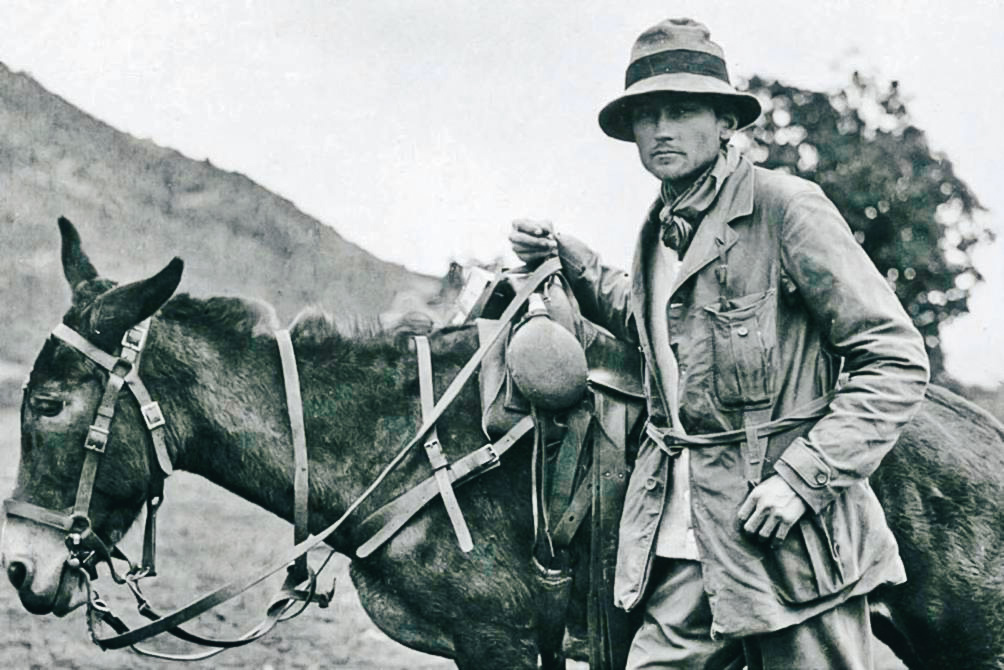
Secondly, we have both been to Machu Picchu before, 40 years ago. (Separately, but who knows, we might have crossed paths at that time.) If a visit here is a once-in-a-lifetime experience, we’ve had ours.
There is plenty to see in Cusco itself.
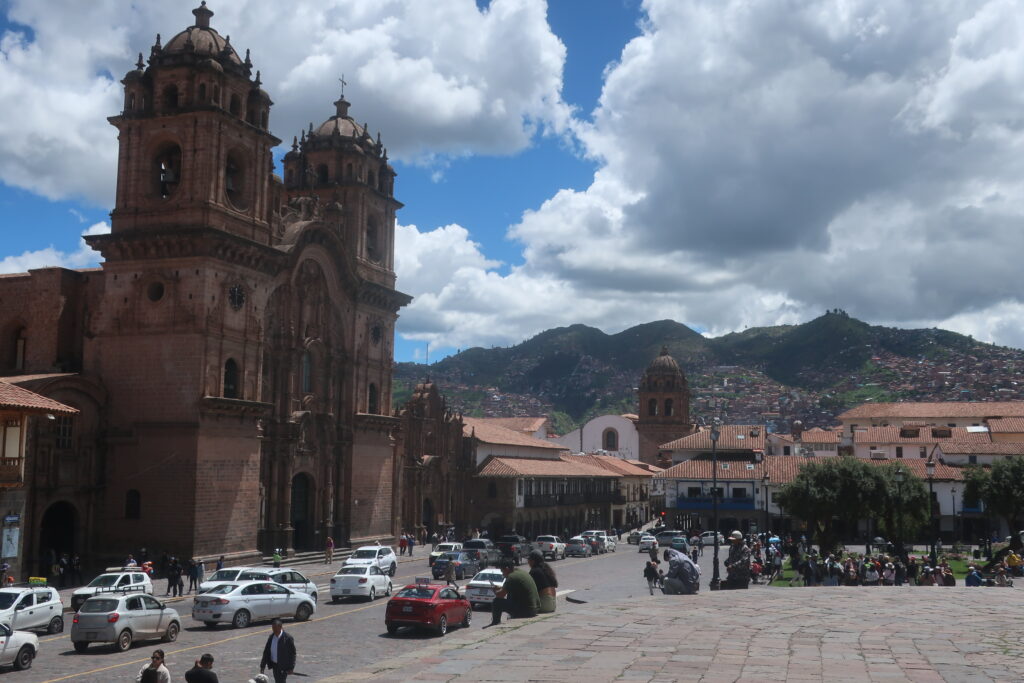
Our hotel is in a colonial-era building. It supports a charity that benefits street children in Cusco.
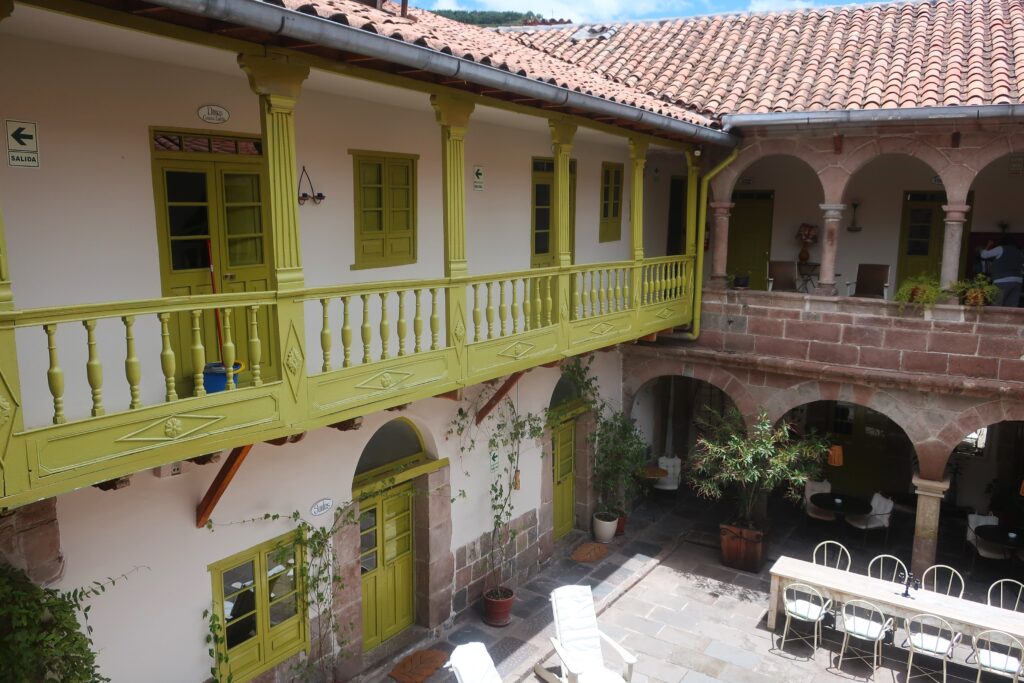
There are lots of cobblestone lanes to wander around in.
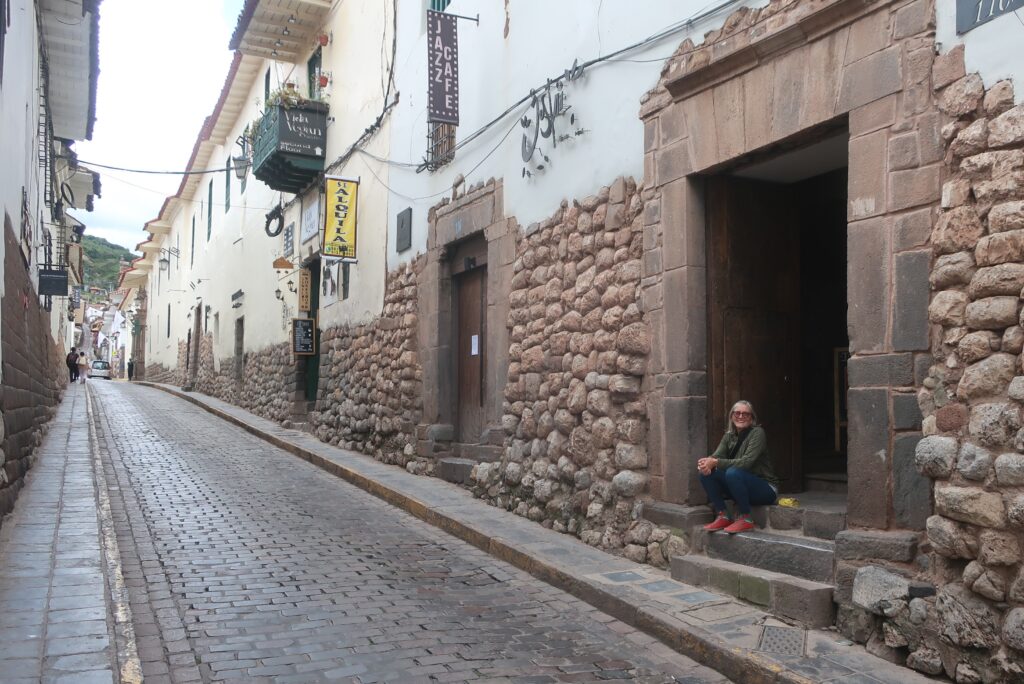
We marvel at the ingenious Inca stonework that we see throughout the centro. You can’t slip a piece of paper between the joints.
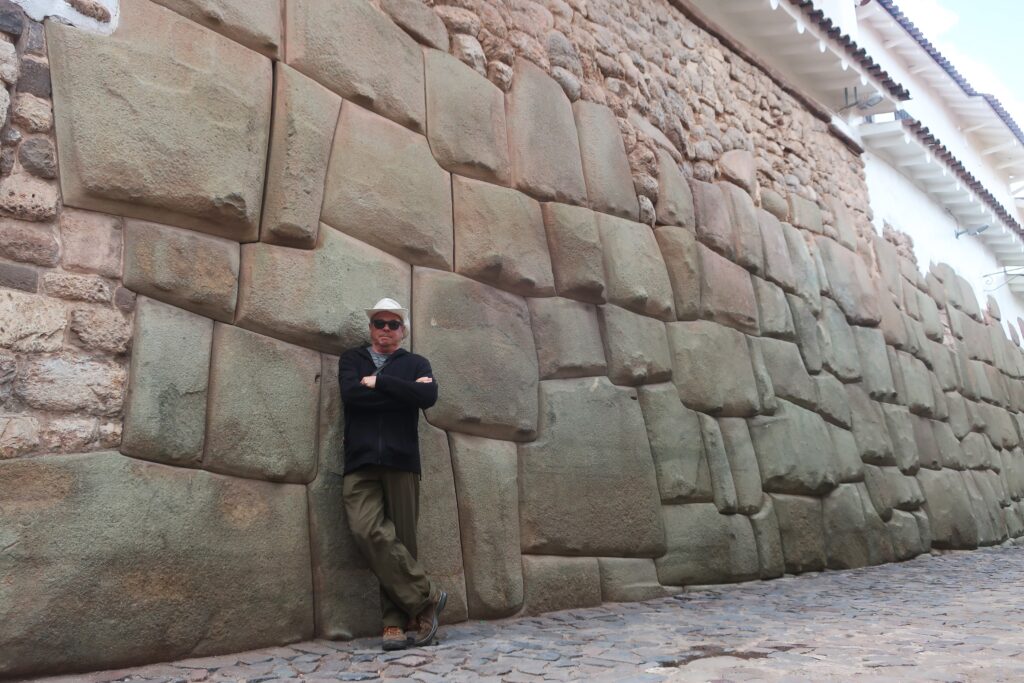
Being such a tourist town, this means someone is always shoving a restaurant menu or a tour brochure in your face. And they don’t stop after you politely say ‘No, thanks.’
It’s a small price to pay for access to people-watching opportunities in town.
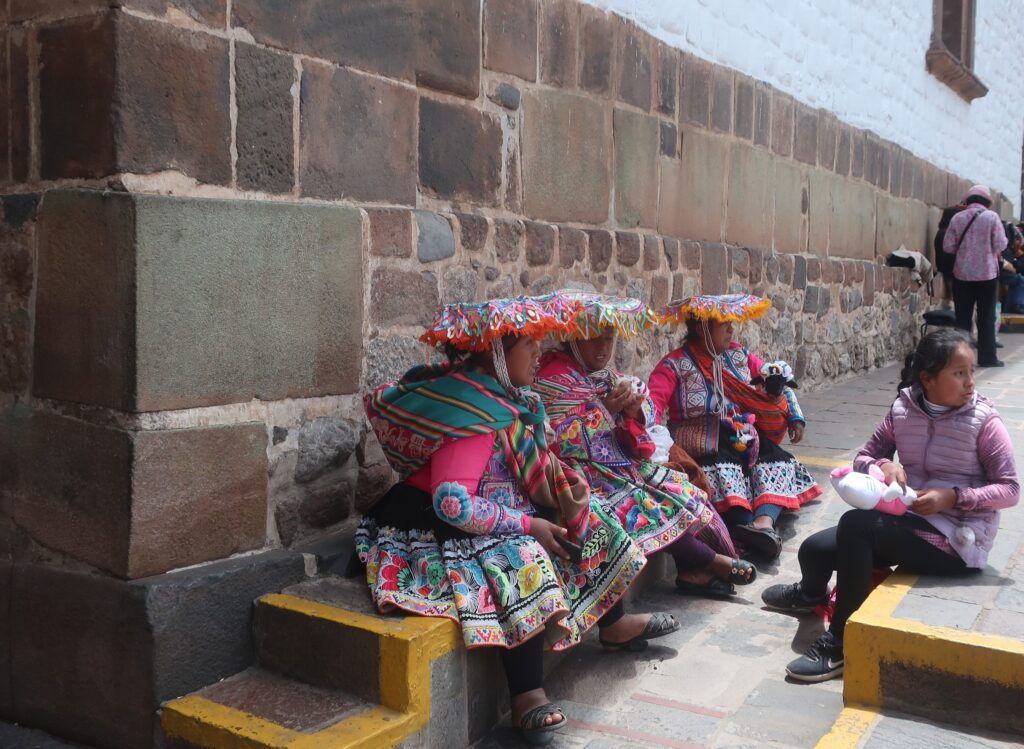
The Convent of Santo Domingo is built on the ruins of the Inca treasury temple of Coriconcha.
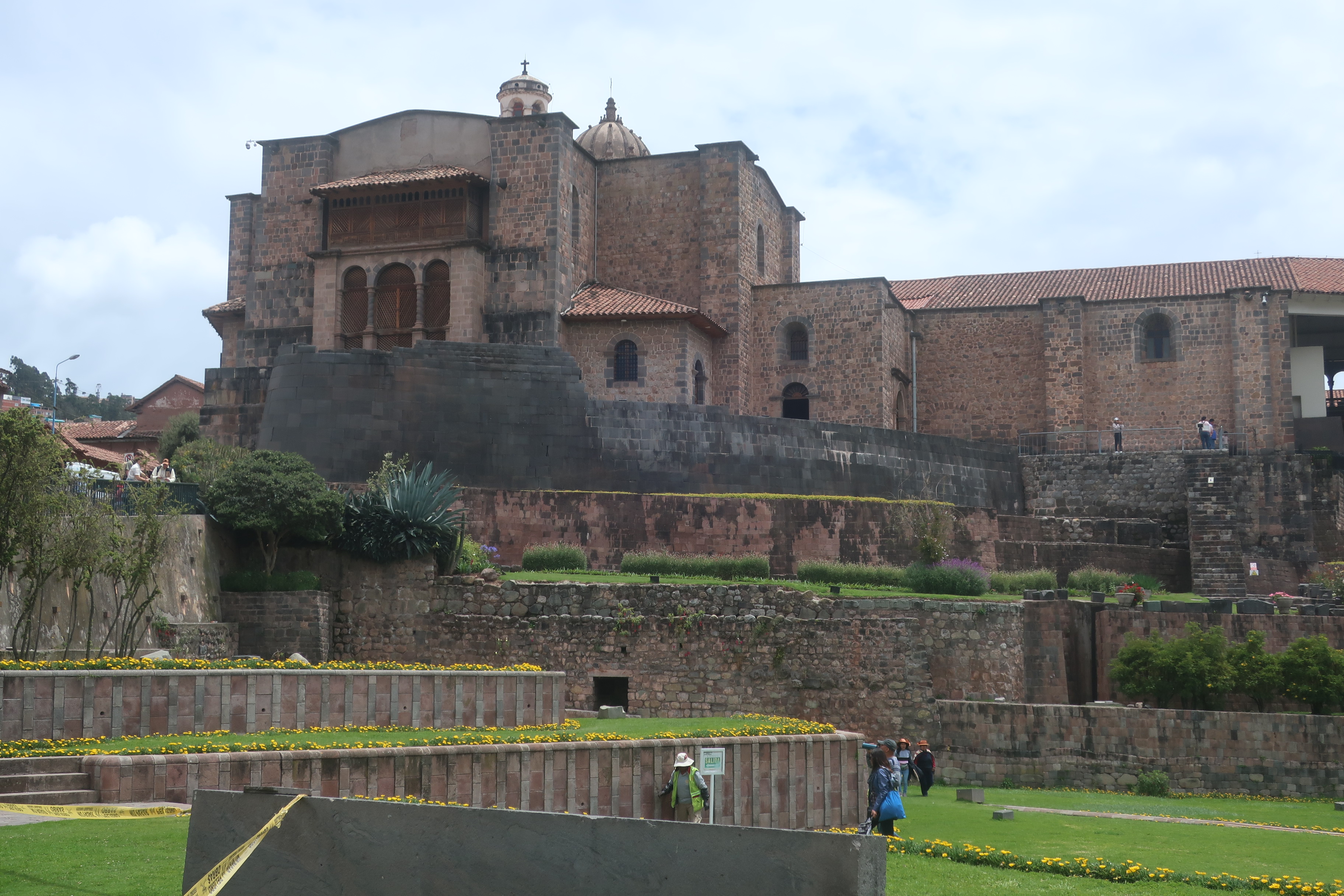
The Incas didn’t get to enjoy their empire for very long. From its founding to the Spanish conquest (1438 to 1533), they had less than a century of lording it over subject peoples before becoming subjects of conquerors even more empire-hungry than themselves.
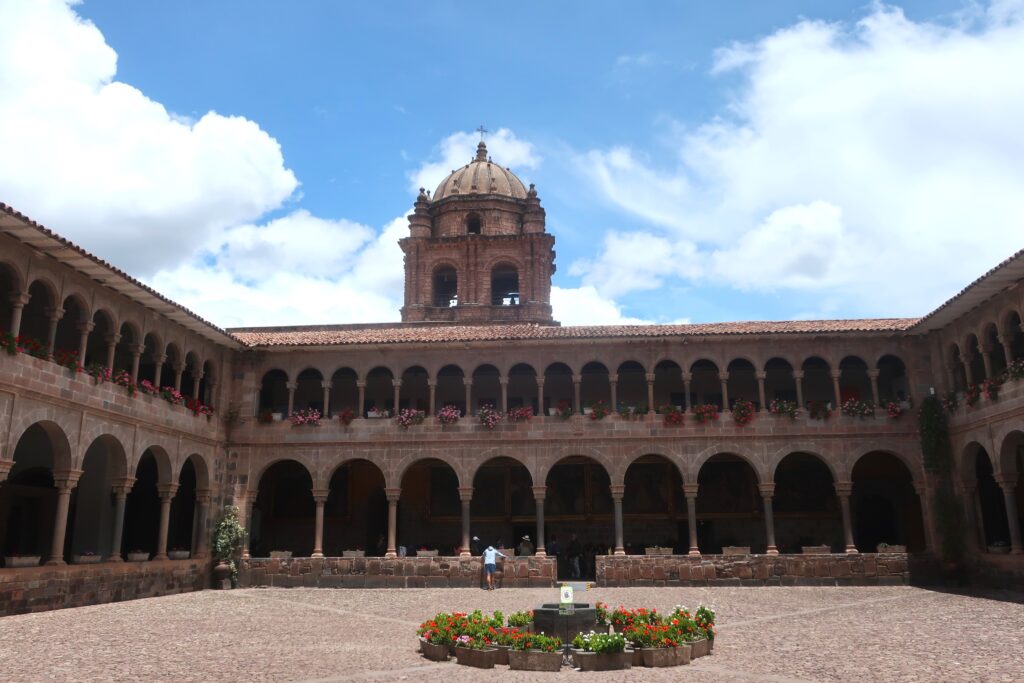
The weather is coolish. For a change, we wear the heavier items in our limited wardrobe.
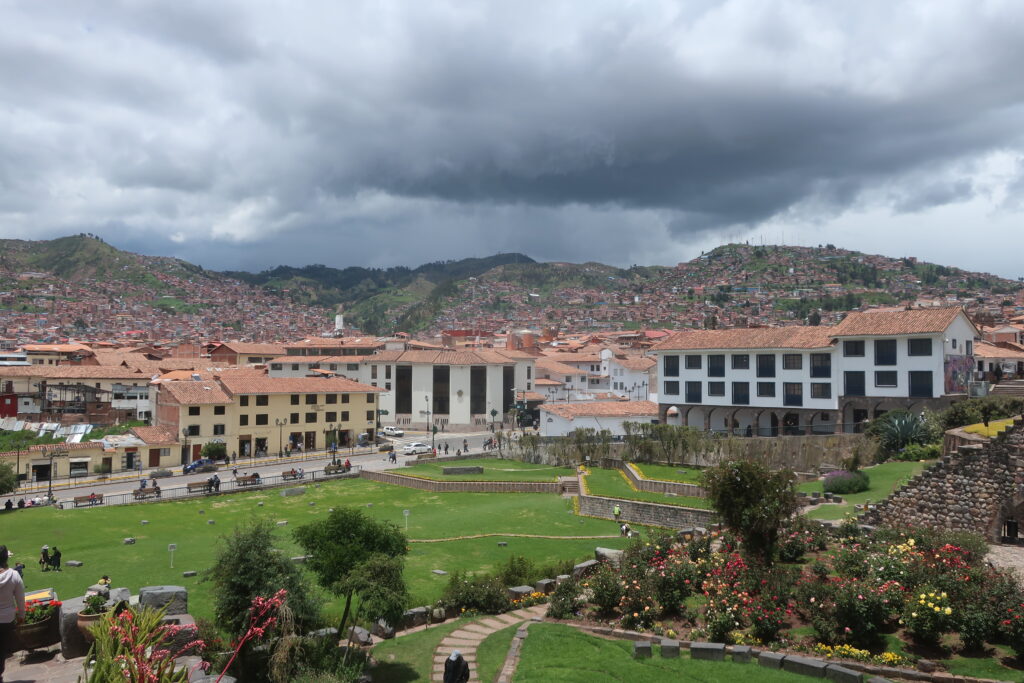
A common sight is the Inca Kola delivery truck.
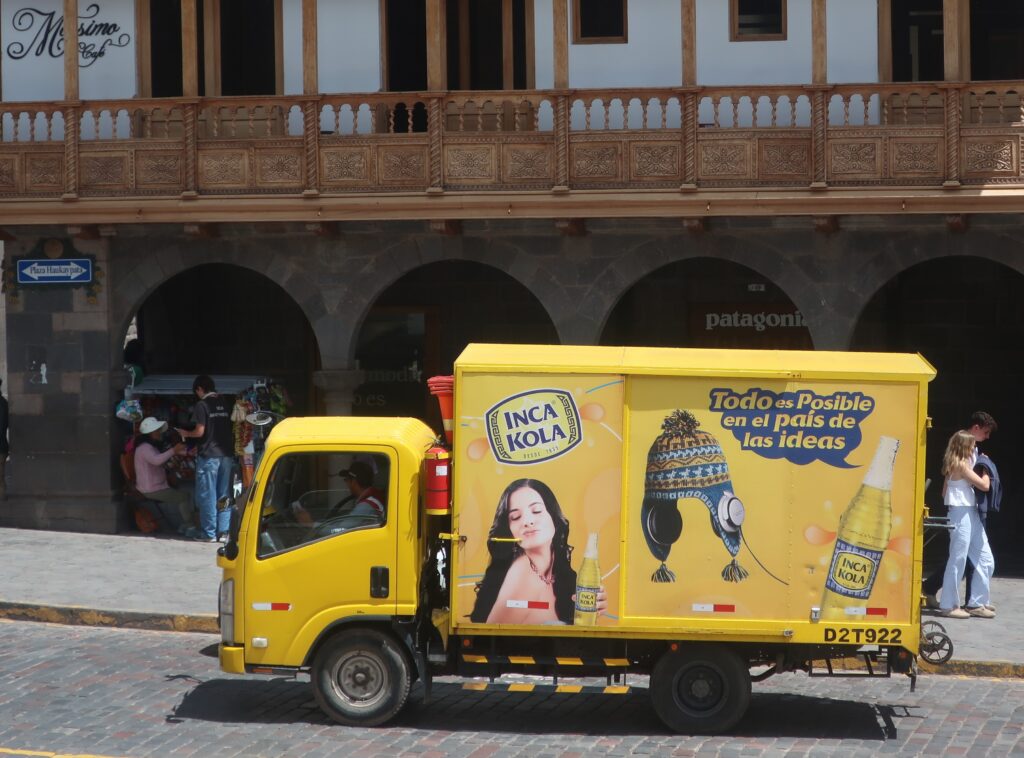
Almost every street corner has women offering to let you have your photo taken with their pompom-bedecked alpacas. It’s hard to resist.
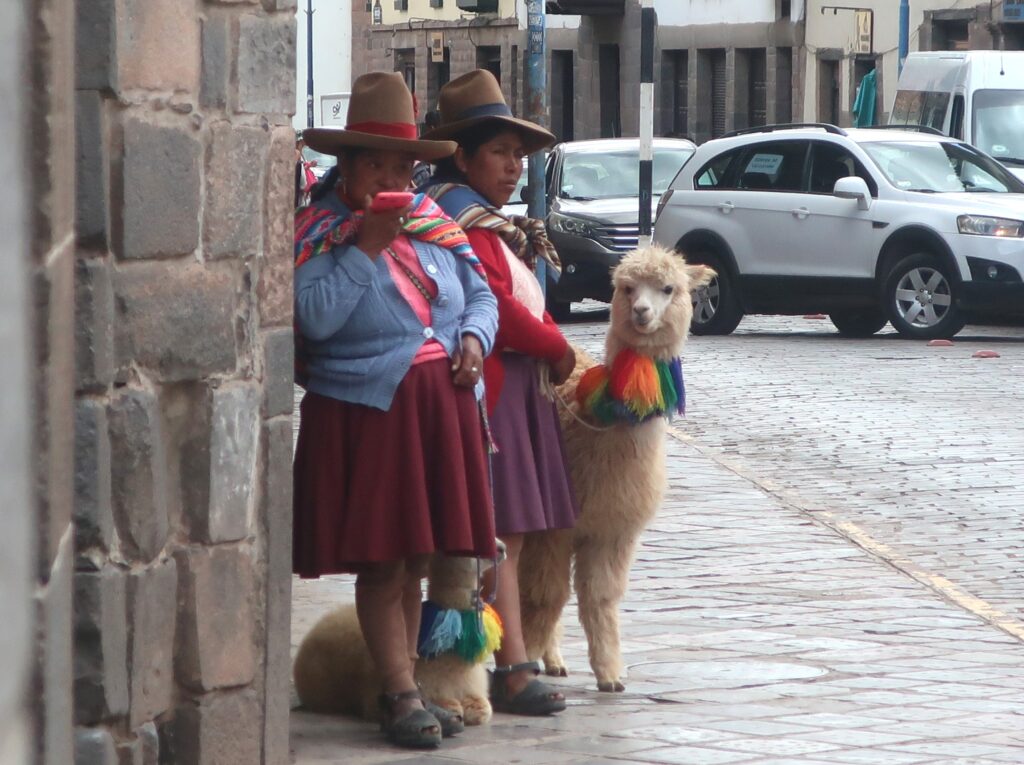
Cusco Cathedral is the most prominent edifice on the main square. It’s built atop the ruins of an Inca temple, like most churches in Cusco.
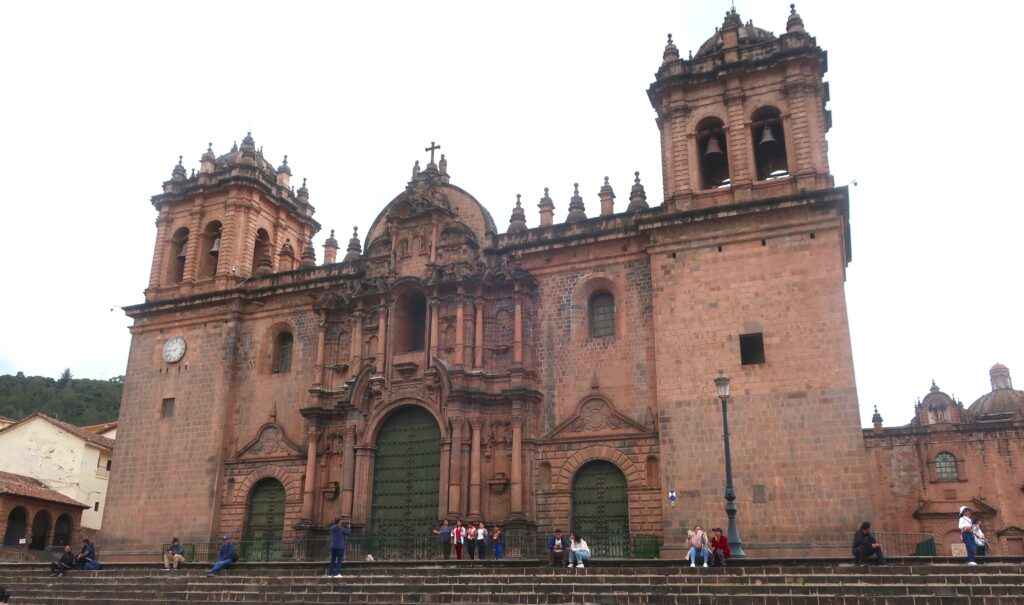
The Convent of Santa Catalina is now a museum of the monastic life. A few nuns still live here.
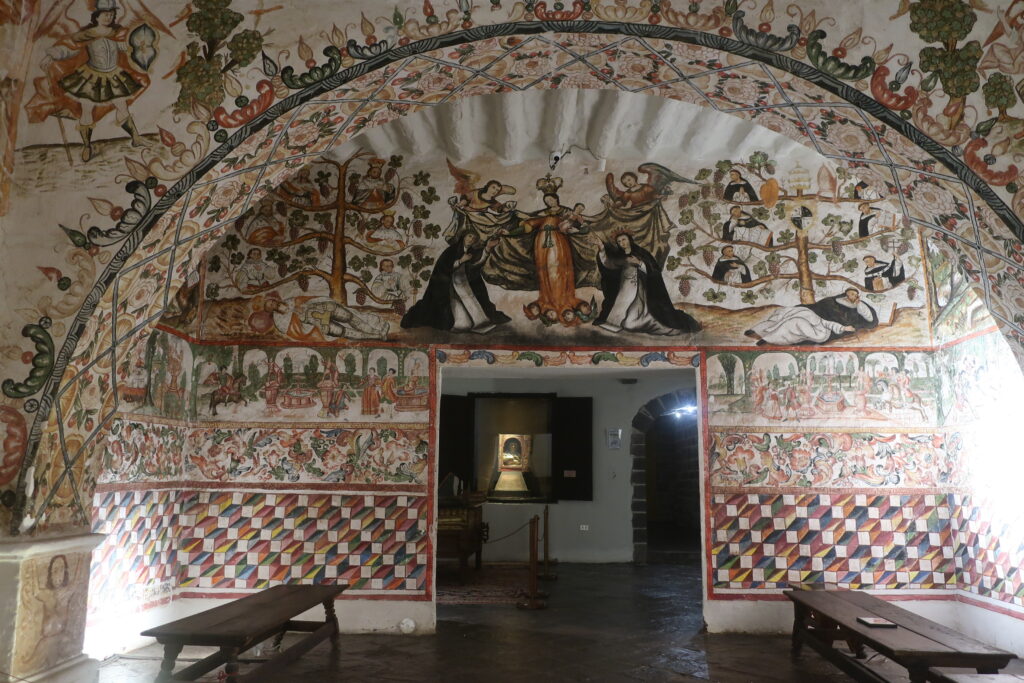
Not surprisingly, we see a lot of religious stuff in heavily-catholic Peru. This symbol appears above many doors. According to some, ‘IHS’ stands for ‘Iesus Hominum Salvator’, that is, ‘Jesus, saviour of mankind’ in Latin. According to others, the name Jesus, spelt ΙΗΣΟΥΣ in Greek capitals, has the abbreviations IHS (also written JHS, IHC, or ΙΗΣ).
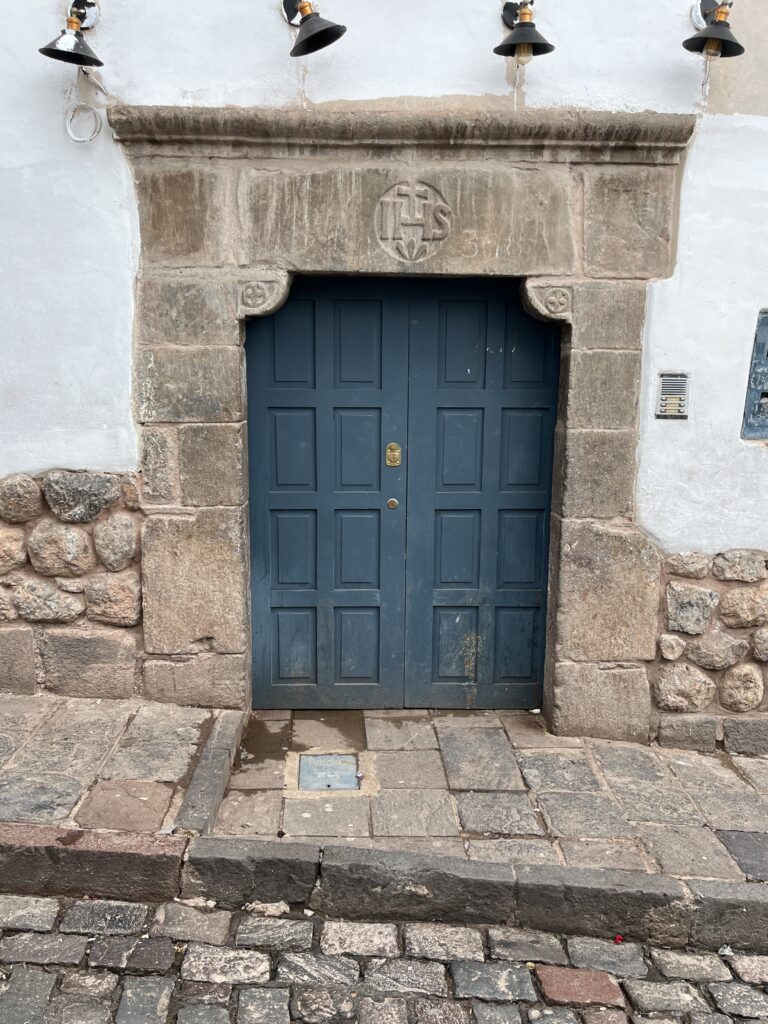
Some kind of hubbub agitates a crowd of indigenous women in town.
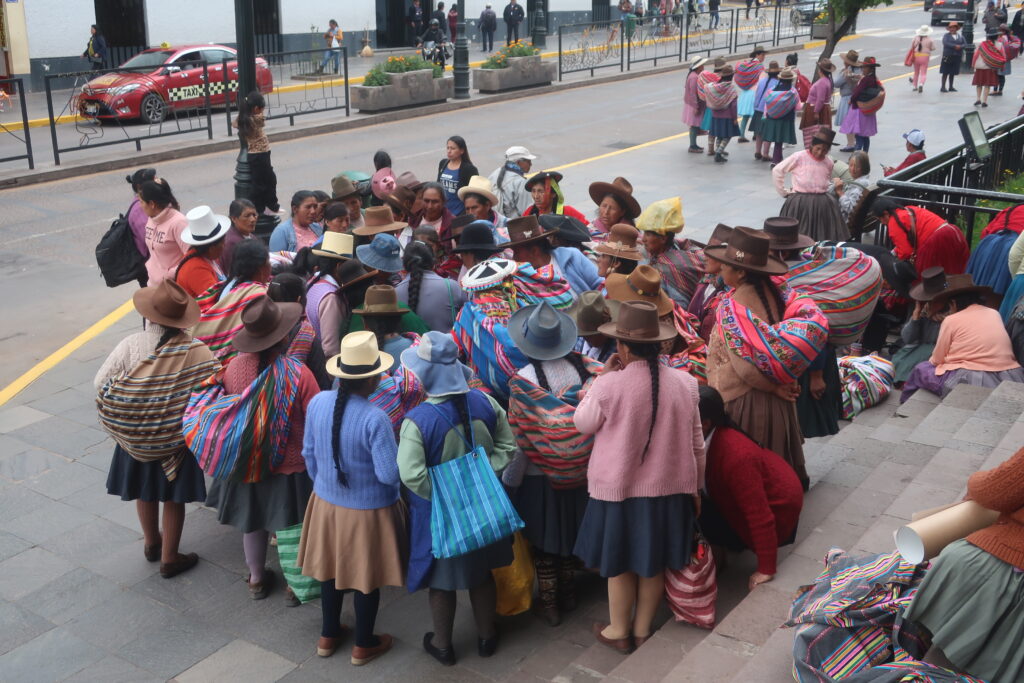
A coffee break turns into indulgence in a fancy dessert, complete with edible flowers.
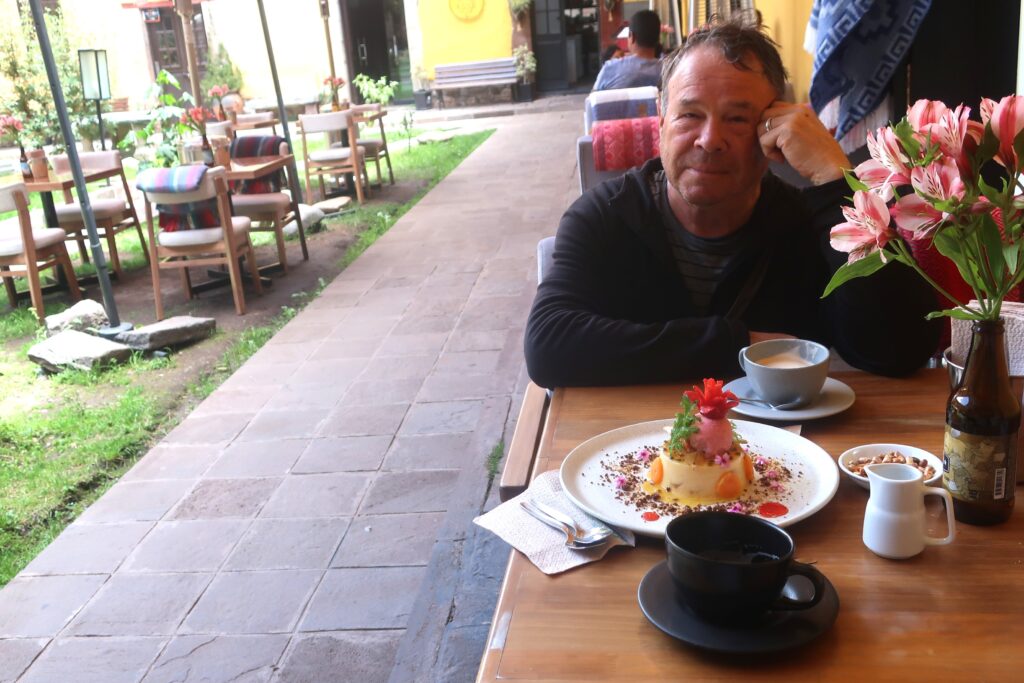
One day, we join a full-day tour of the Sacred Valley. It looks a bit like Austria from afar.
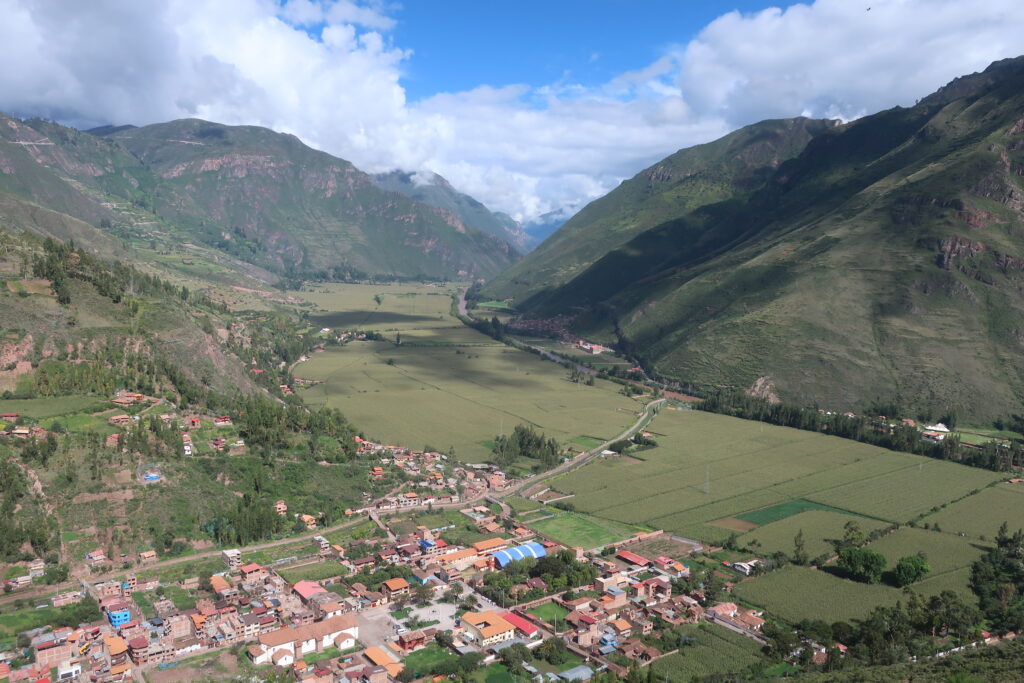
An instant improvement is to include ourselves in the photo.
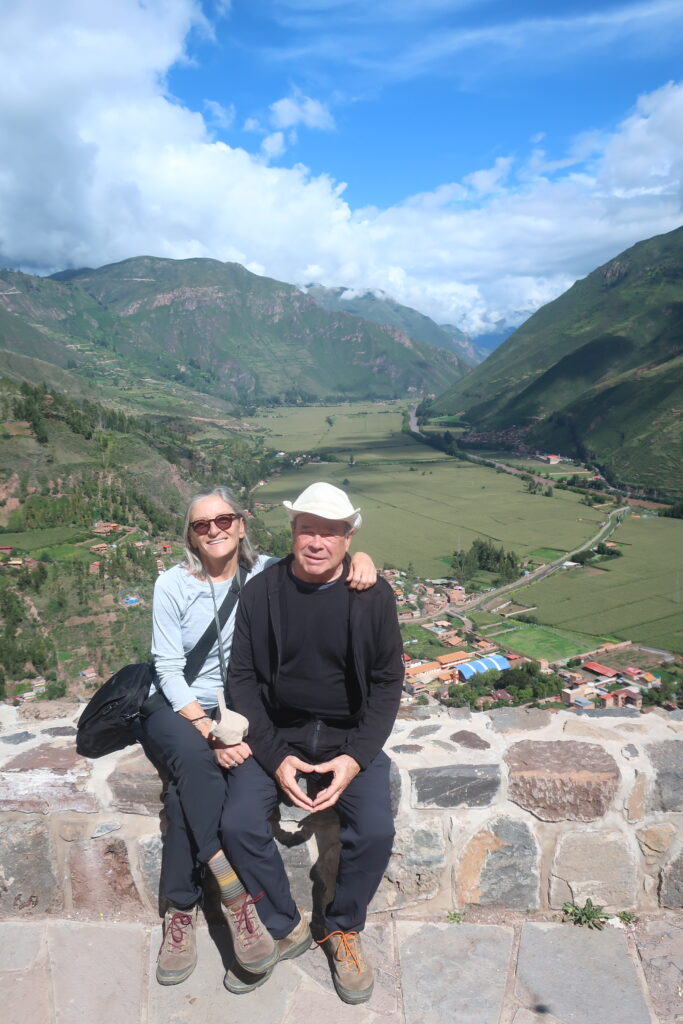
The first stop is Pisac.
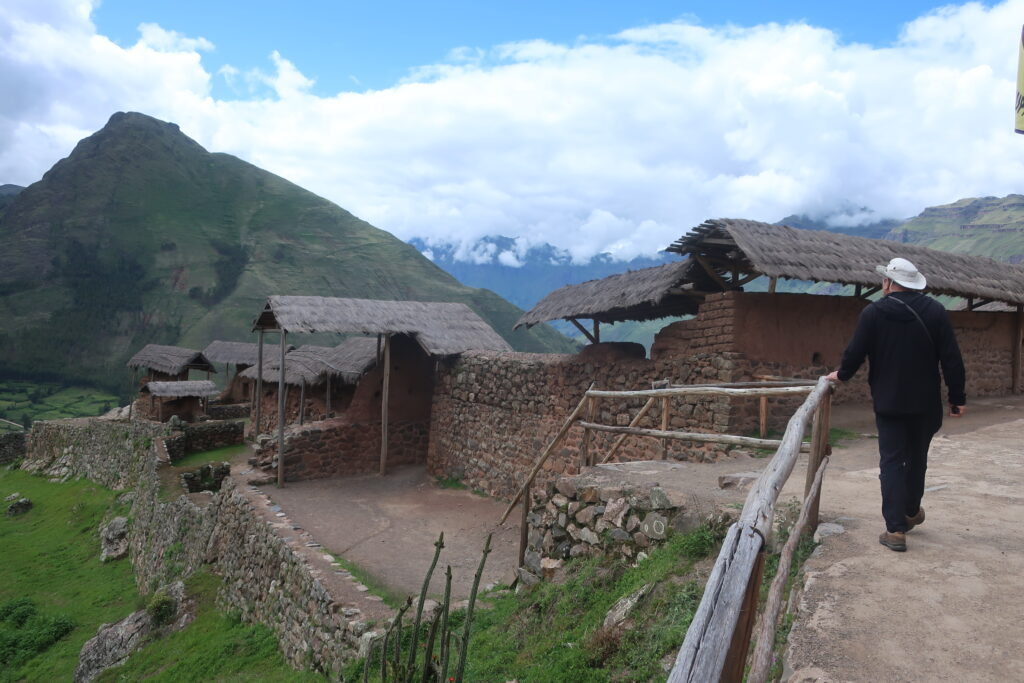
Pisac, like many Inca towns, is built on top of a mountain, surrounded by intensely-cultivated terraces.
You still see traces of these terraces all over the Andean region (that is, the former Inca empire.) Most of them are no longer used.
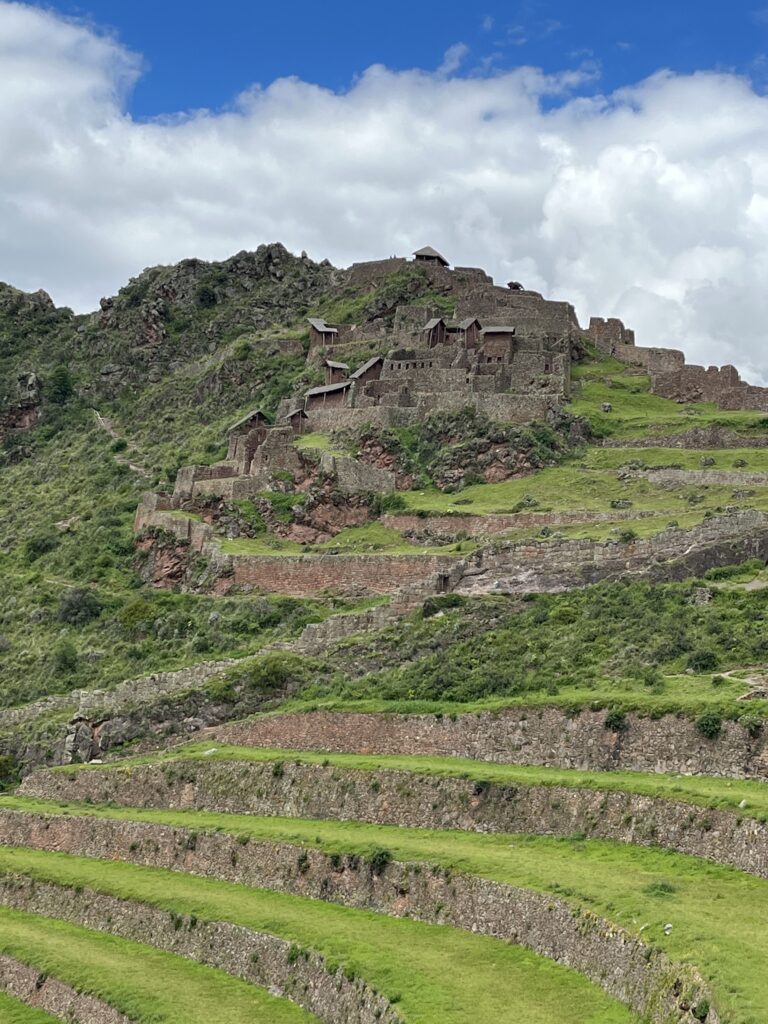
There was an extensive cemetery here that was looted by the Spanish. No great surprise there.
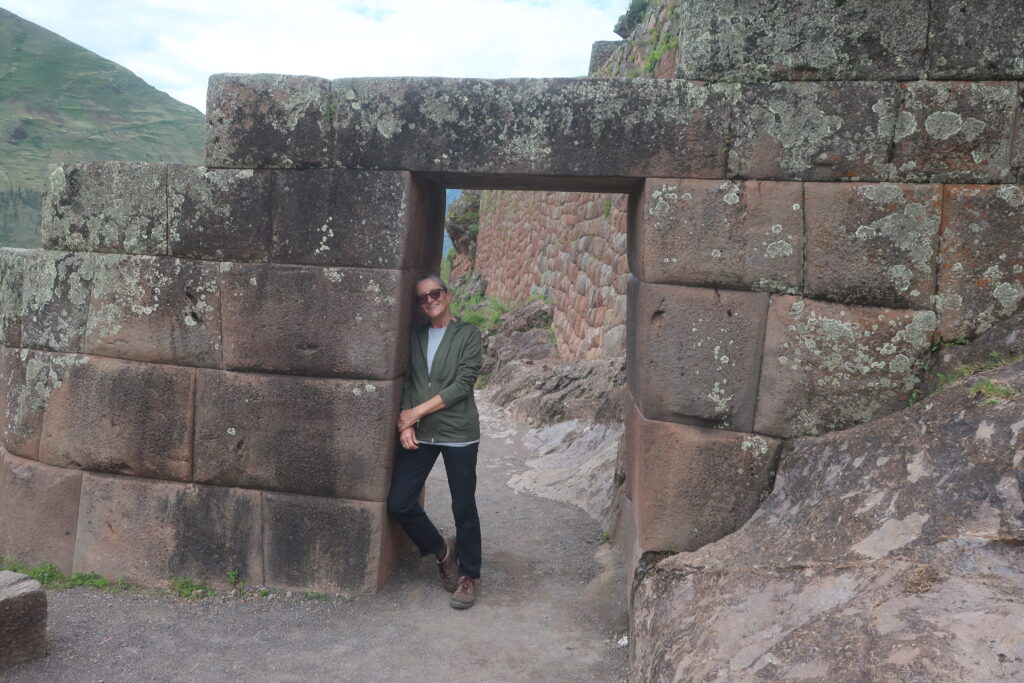
After lunch, we visit Ollantaytambo. It’s another steep climb. Our guide incentivizes us by telling us part of a story, then promising to reveal the result at the next level. It works.
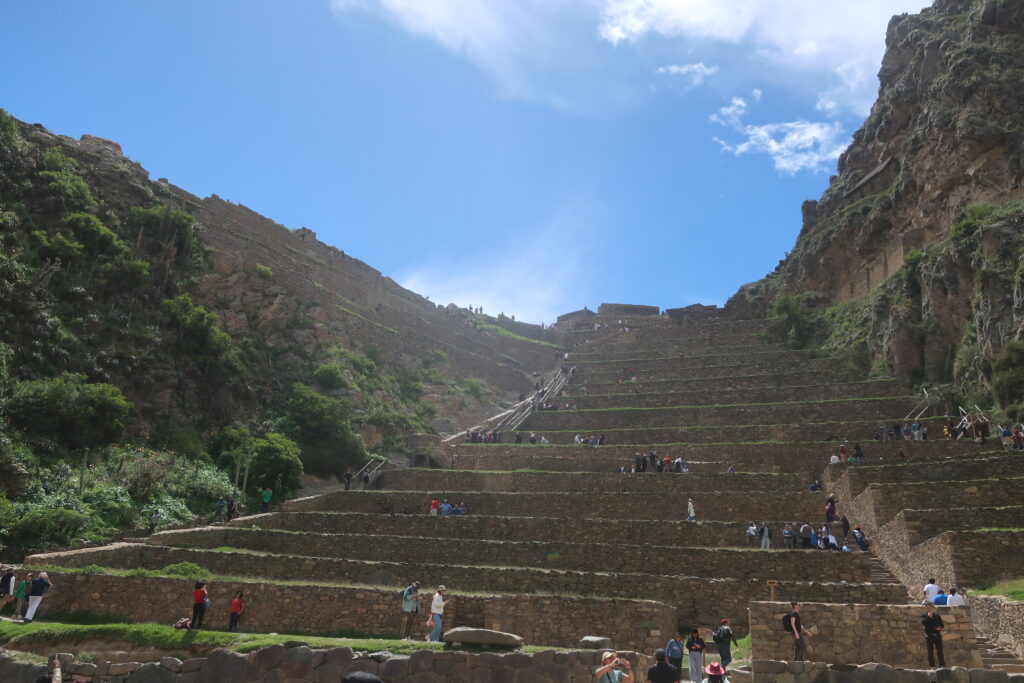
When I was here last, we joined the Inca Trail here. I vaguely remember hiking up these steps with a full backpack.
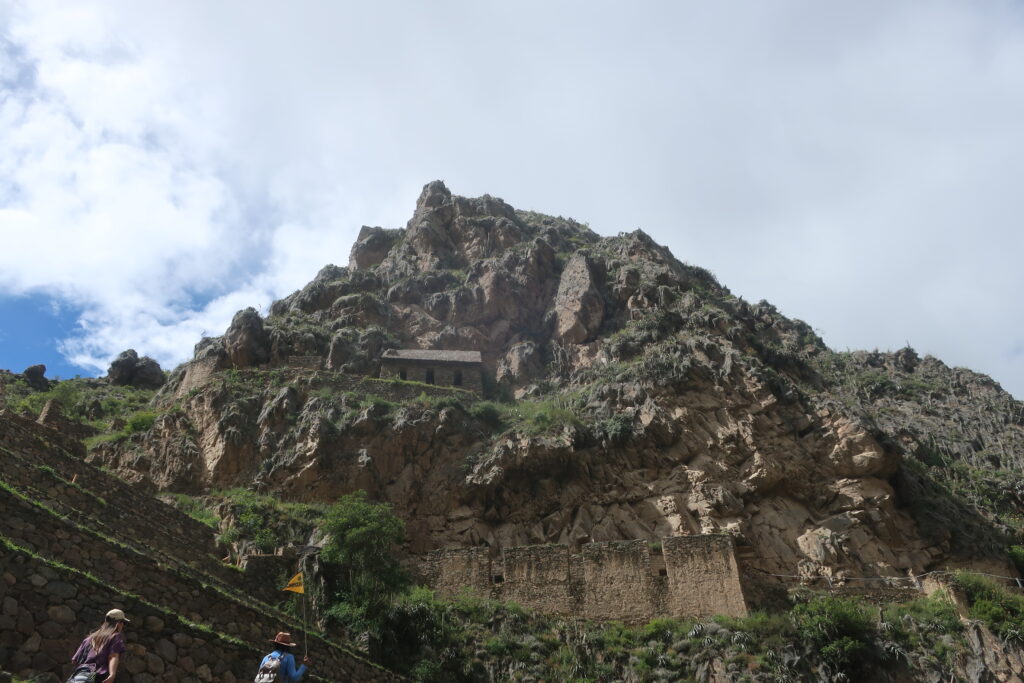
These enormous slabs are said to be a ‘temple of the sun’. Our guide tells us that this is in doubt. That’s the problem with pre-literate cultures: without a written language to record things, all history is legend, old wive’s tales, and ‘oral tradition’ usually involving talking animals – nothing is concrete.
We read somewhere that each of these slabs weighs 50 tons.
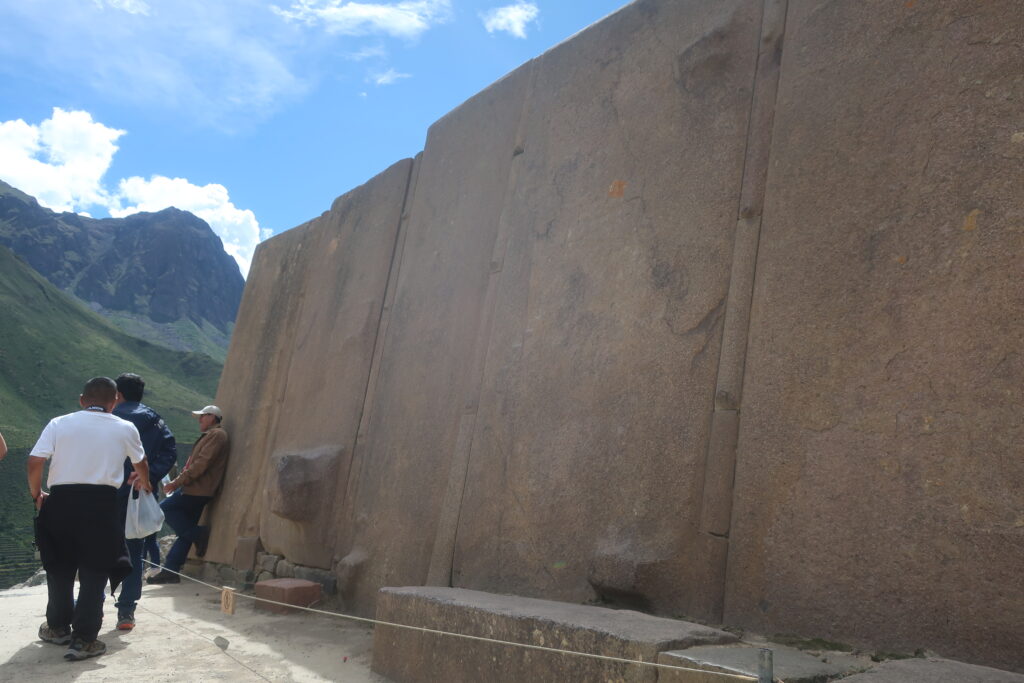
Next stop is Chinchero, which like many places in Peru still has an active textile-weaving culture.
I’m personally fascinated by the Tom Mix hats that so many local ladies wear.
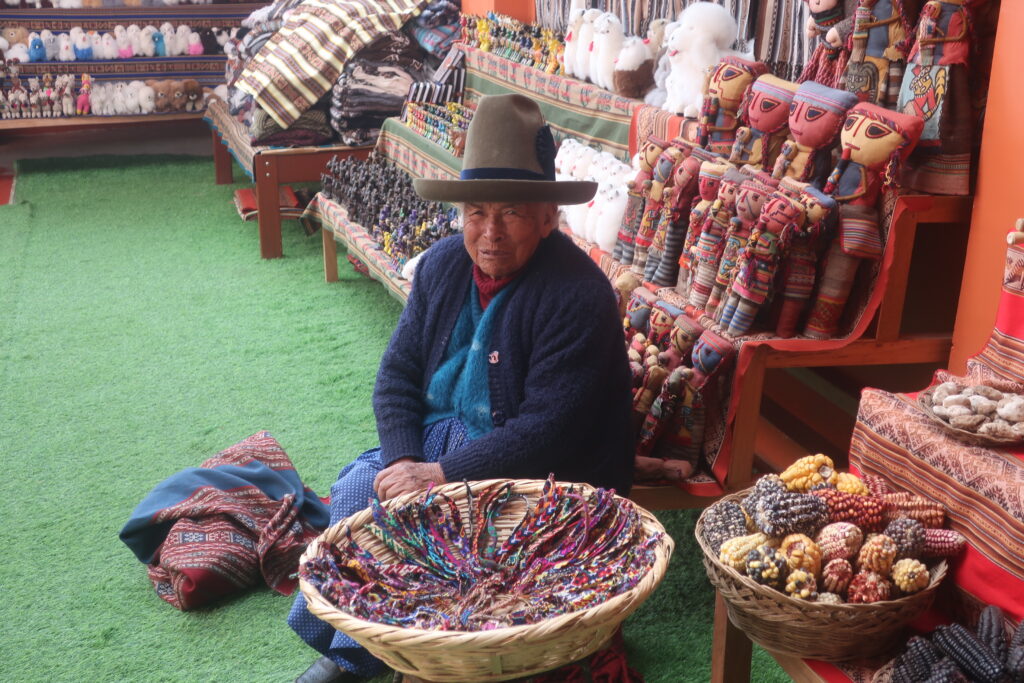
We get a demo on the production of textiles in the area. For more information on what looks like a dollhouse in the background, see the ‘Sight or Insight of the Day’.
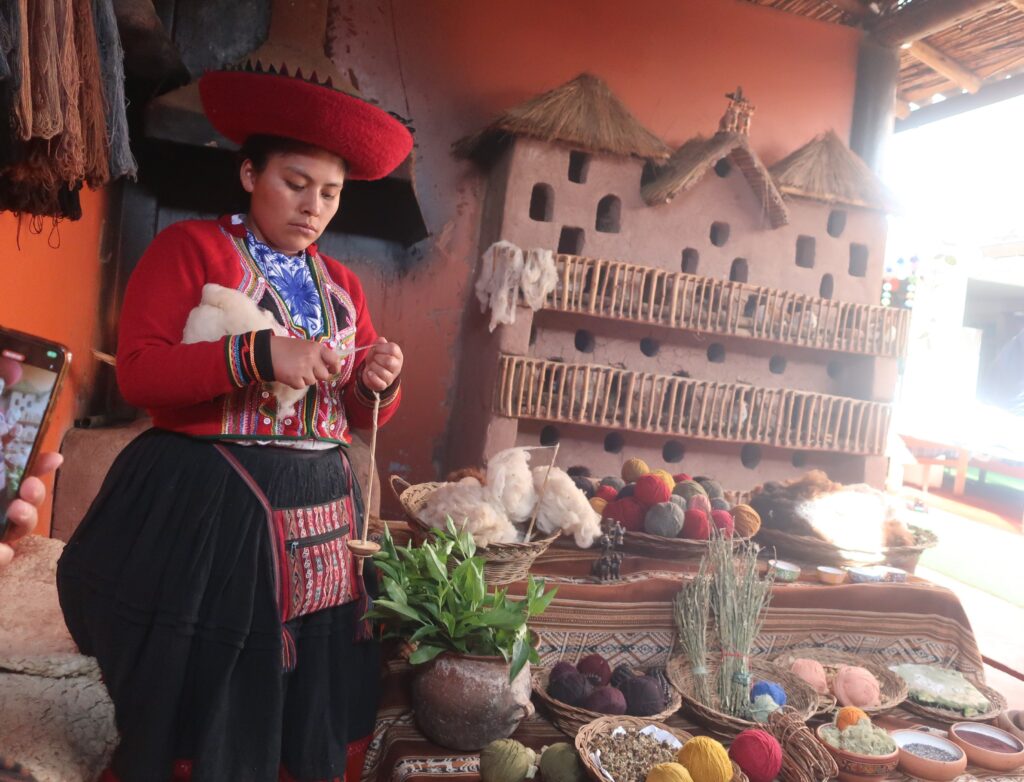
There are also Inca ruins in Chinchero. As usual, a church has been built on top of the demolished Inca structure.
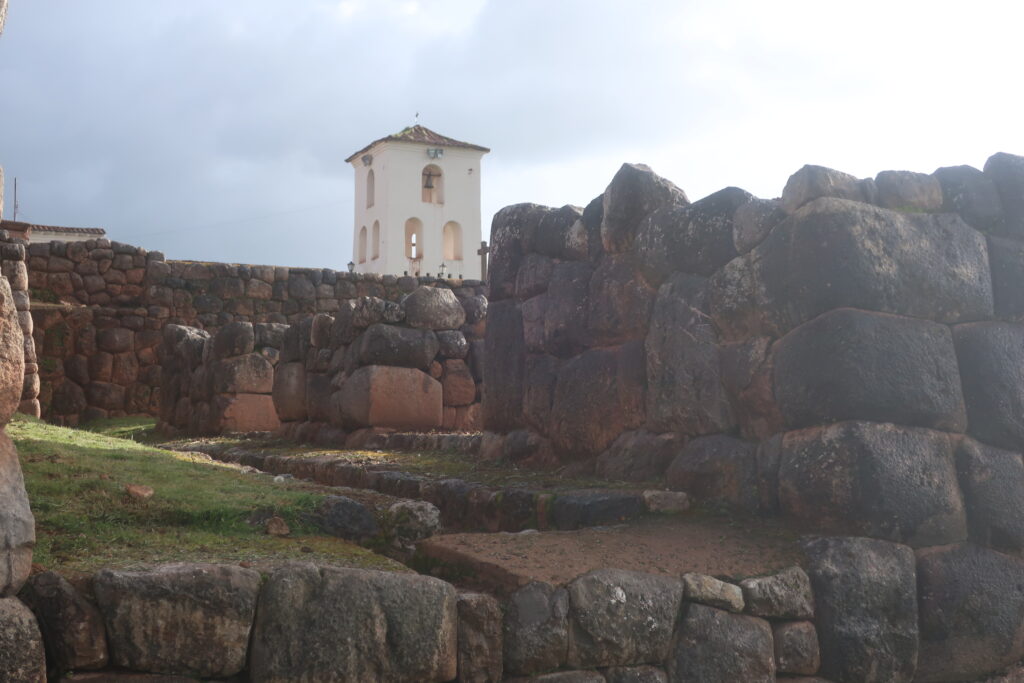
This method of stone construction proved to be good protection against earthquakes, which this part of the world has a lot of.
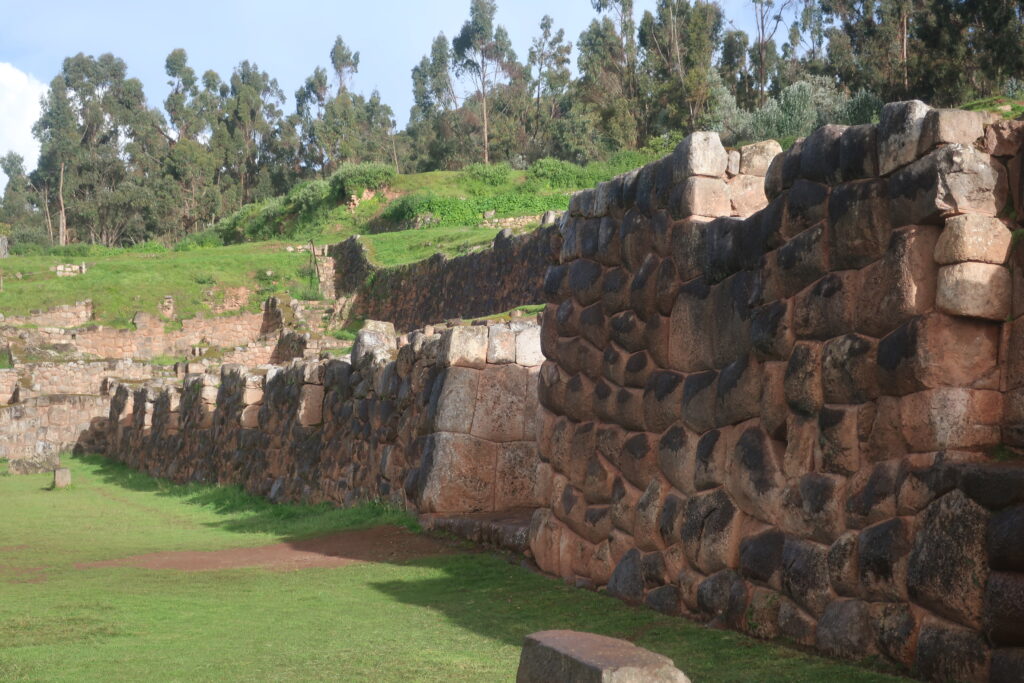
Sight or Insight of the Day
A lot of people don’t know this*, but in Peru, Guinea pigs are food, not pets.
*I’m borrowing this phrase favoured by Donald Trump. He uses it whenever he learns something new that he assumes nobody else knows either, even if it’s commonly known or obvious. There are many, many things that Donald Trump doesn’t know. Because he’s an idiot. Or should I say ‘A lot of people don’t know this, but Donald Trump is an idiot’?
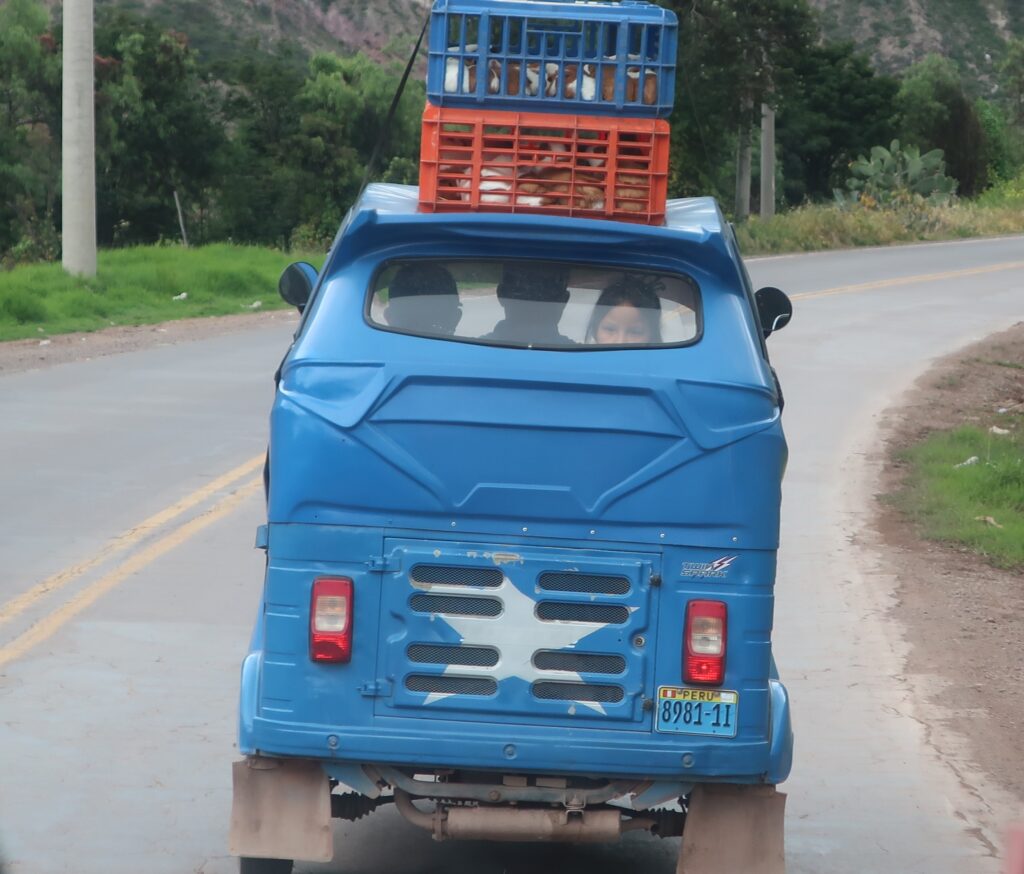
This is true throughout the Andean region. Guinea pig, or cuy, is served up piping hot in cuyerias everywhere. We can’t help but see them as cuddly pets. Such is the strength of food prejudices the world over.
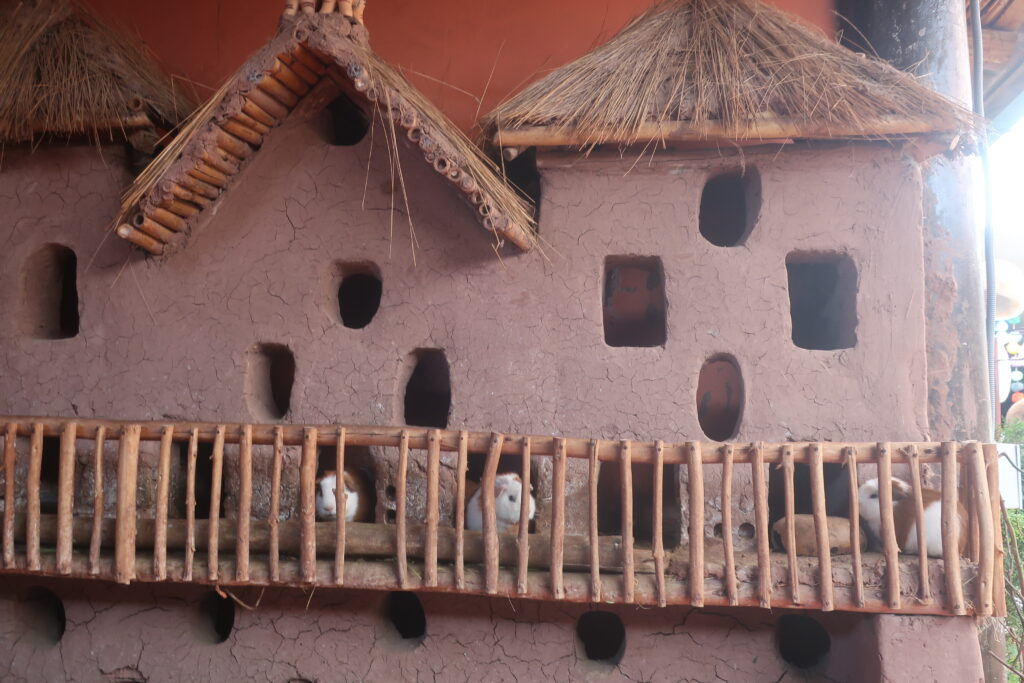
At one time, when much younger, if someone dared me to sample this, I would say ‘Here, hold my beer’. Being much older and a little wiser, that’s now a hard ‘nope’.
